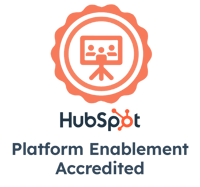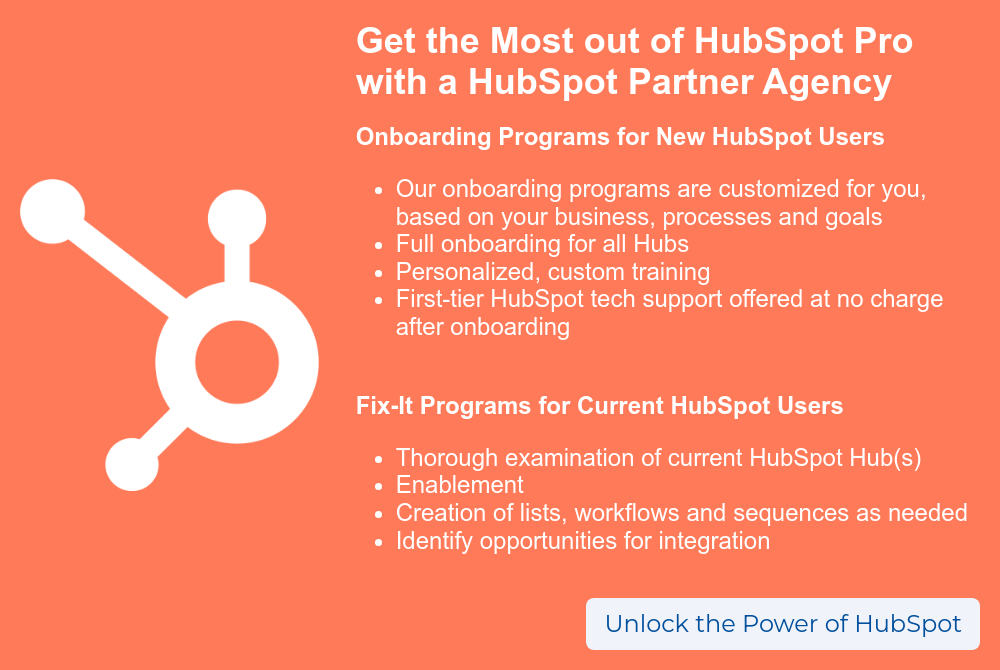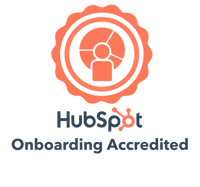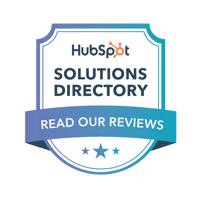Data syncs are an incredibly important - and potentially complex - functionality within HubSpot. Syncs ensure information flows smoothly from your various systems and, once implemented, allow you to tap into the information you need exactly where you need it. The trick is getting everything set up correctly - which is easier said than done.
What is Data Sync?
Data sync is a tool within HubSpot that allows you to sync between HubSpot and an external app or software to unite your customer data in one platform. Current customers can browse pre-built data syncs available within HubSpot. Additional software may require a custom sync build from a HubSpot integration partner agency.
Syncs are vital for nearly every business that uses HubSpot. At a minimum, if you're transferring from another CRM to HubSpot, you'll want to use a sync to transfer data out of the old CRM. In other cases, you may need to keep your external apps to use their functionality but also will need the information transferred into HubSpot (or vice-versa).
This is all very high-level and technical, so let's walk through a real-world example. A home builder uses the software Buildertrend to schedule construction projects and track details like change orders and receipts. However, they also use HubSpot for customer management and marketing. They'll want customer information in both places and the information to sync so they don't have to update the same info in two different software manually.
Data Sync: One Way or Two Way?
Understanding data sync is one piece of the puzzle. The million-dollar question is: how should you set up your sync?
One-way sync will transfer data FROM one software and INTO another. This is a simple transfer process, and it's the default within HubSpot for most pre-build app syncs like Google Contacts. You may also want to use one-way sync initially when opening a HubSpot account, even if you intend to do two-way sync down the line.
Two-way sync will flow data FROM and INTO two software simultaneously. This is a much more complicated process than a one-way sync, but is the better option for companies needing both software simultaneously.
Ok, but how do I decide which to use?
At the end of the day, each situation and use case is different and highly subjective - which is why working with HubSpot integration partner agency is a good idea, so you can tap into their expertise and recommendations. However, there are a few high-level factors to consider when deciding.
What data do you want to sync? Is it simple contact information, or more complex data sets?
Why do you want to sync the data you want to sync? How will it be used?
How does the external app play with HubSpot? Some native integrations limit what information can be synced and in which direction(s). If a custom sync is required, that may also pose some limitations on what can be synced one way vs. two ways.
When is data updated in the external app? Is it frequently or infrequently?
Tips for Syncing
Whether you decide on a one-way or two-way sync, the setup process can be intense. Even using the pre-built syncs within HubSpot, there are a lot of boxes to check and a lot of information to reference. When conducting a sync, follow these tips to make the process run smoothly.
1. Do a test first
If you ignore all my other sage advice, this is the one tip I want you to follow - and this goes for anything in HubSpot, really. Do a test first. Even if you're 99% sure everything is set up perfectly, run a test.
I promise you, it's easier and less frustrating to spend extra time running a test than cleaning up a massive import later. Dip your toes in to see how deep the water is, don't just dive in head-first and hit concrete.
2. Go slow
Once you've done a test, you'll probably want to pull the metaphorical lever and just get everything going. However, because a sync is so complex with a lot of room for error, I strongly recommend taking it slow. Import data in chunks, increasing as you go and as you gain confidence that everything is working as planned.
It's a lot easier to fix a problem when you notice it after 50 contacts have been imported than after 50,000.
3. Sync now, map later
Once you sync data into HubSpot, you need to do some mapping to ensure information is categorized properly. Some default mappings probably won't require any customization - such as First Name, Last Name, or Email. Map those with ease as they come through. However, you're likely going to have custom mapping that will need to be done to ensure data is categorized into the right contact property in HubSpot.
Sync now, map later. Focus on getting data into HubSpot with default mapping, and then use bulk editing tools to map custom properties after the data has made it completely into your HubSpot. This will ensure that everything works properly before tackling more complex actions. You can also set up workflows to map those properties for you later.
4. Use an integration partner
Syncs are complex. Even using the pre-built apps in HubSpot, the process often has hiccups. Troubleshooting these as they come through can prove an incredibly frustrating and time-consuming task.
A HubSpot integration partner agency does all of the strategy, planning, execution and ongoing maintenance on your behalf. That's a lot of hours and frustration that you and your team no longer have to face.
Get the Most Out of HubSpot
HubSpot is a significant investment. If not implemented and used properly, you're not getting the most out of this powerful tool. You can go it alone, but working with a HubSpot partner agency means you don't need to become an expert in HubSpot to get the most out of your investment.
 BizzyWeb is a HubSpot Platinum Partner: we offer full-service HubSpot onboarding, enablement and strategy for all hubs. Our team has over 196 certifications in HubSpot (and constantly growing). No matter what your HubSpot needs are, our team is ready to handle them.
BizzyWeb is a HubSpot Platinum Partner: we offer full-service HubSpot onboarding, enablement and strategy for all hubs. Our team has over 196 certifications in HubSpot (and constantly growing). No matter what your HubSpot needs are, our team is ready to handle them.
Plus, we are the only agency in Minnesota with a Platform Enablement Accreditation from HubSpot - sounds fancy, but it means we're top-notch in making HubSpot work within your business.
BizzyWeb is a Minneapolis-based digital marketing and web design agency that helps companies get the high-quality leads they need to grow and thrive. Our tactics include inbound marketing, SEO, advertising, web design, content creation and sales automation. We are an accredited HubSpot Platinum Partner and we offer full-service HubSpot onboarding, enablement and strategy for new and current users.





